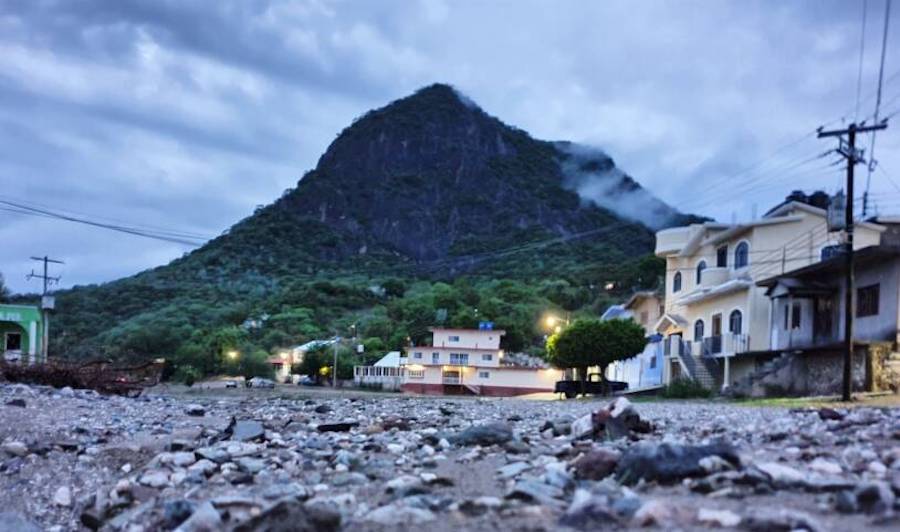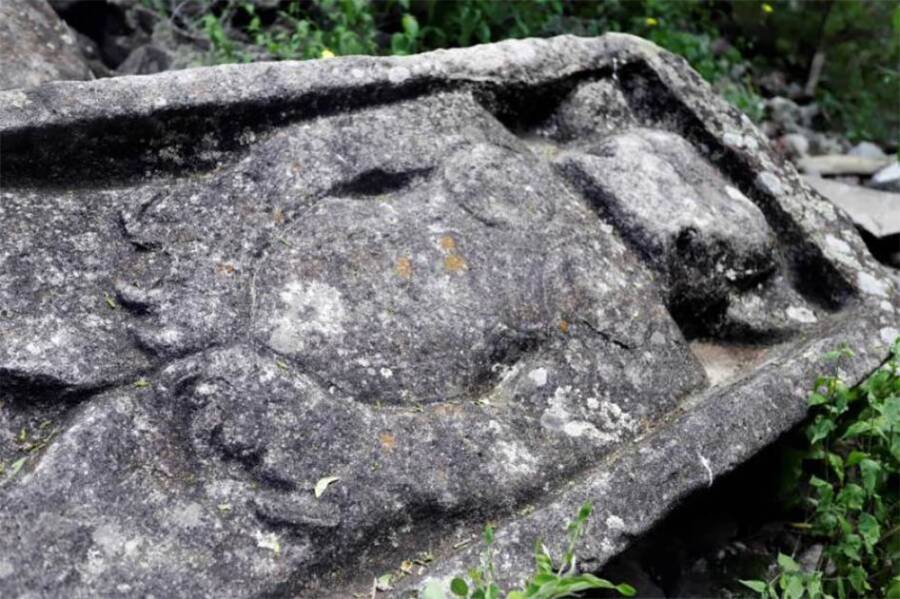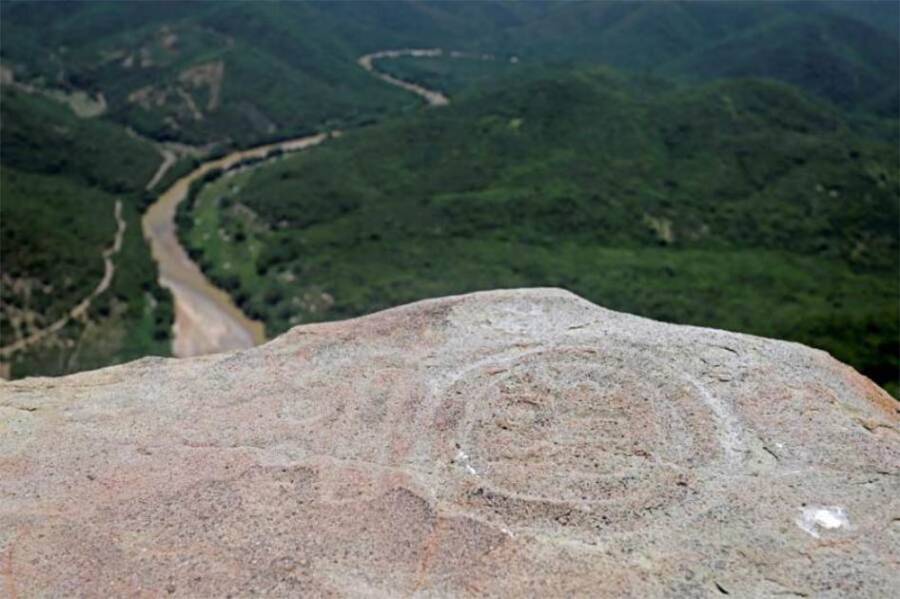The Zapotec Ruins Of Mexico’s Ancient ‘Cloud People’

FacebookThese 2,500-year-old ruins were found atop the 6,000-foot Cerro de Peña mountain.
In the remote southwestern village of Santa Cruz Huehuepiaxtla in Mexico, a 6,000-foot mountain cuts into the clouds. Cerro de Peña’s summit is astonishing in and of itself — but there’s even more to it than what meets the eye. It was once occupied by the Zapotecs — Mexico’s ancient “cloud people” — and it boasted homes, temples, and a games court.
The Zapotec ruins of this pre-Hispanic culture were discovered by locals in the summer of 2020. These exciting archaeological discoveries included two stone monuments carved into the mountains.
Alongside the two carved stone panels, or stelae, experts found smaller stones that were also etched into, with engravings that showed animals like eagles and iguanas. There was also a carving of a woman who resembled a bat — and she may have been an ancient goddess.

EFEExperts are wondering whether the female figure resembling a bat might’ve been an ancient goddess.
The high-altitude home was clearly built by the Zapotecs, who lived in the southern highlands of Mexico before Spain’s conquistadors ravaged the region. And the carvings suggest that this was a site honoring the god of the underworld.
While this region of Mexico is littered with ancient ruins, the Cerro de Peña site is one of the most fascinating archaeological discoveries in the area. It has also helped researchers at Mexico’s National Institute of Anthropology and History (INAH) see how these ancient people really lived.
INAH’s José Alfredo Arellanes said that the ceremonial area was once flanked by temples and the games court was used to play pelota — a sport comparable to basketball. But what’s even more remarkable about these ancient people is that they established their own distinctive writing system. As for the newly discovered carvings, Arellanes said, “87 glyphs, or symbols, have been found so far.”

Oro Noticias
It took the archaeologists nearly three hours to hike up the mountain.
By fusing their cultural and religious practices into social life, Zapotecs were said to flourish as a society with focus and steadfast determination. They thrived independently for centuries and even successfully defended themselves against the Aztecs. But ultimately, many of their populations were decimated due to diseases introduced by Spain’s conquistadors.
Nonetheless, the ancient culture is revered in the region to this day. And communities of modern Zapotec people who celebrate some ancient beliefs — as well as modern Catholicism — still exist across Mexico today.





